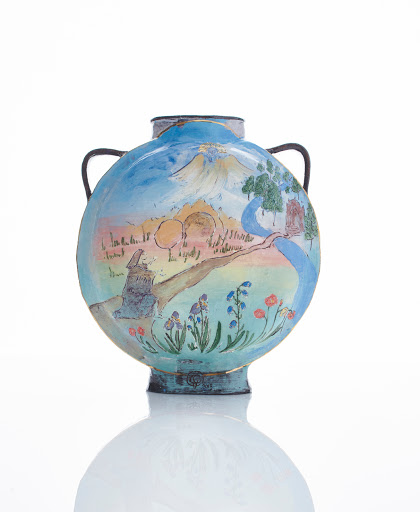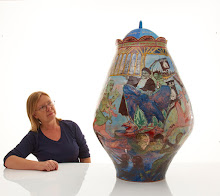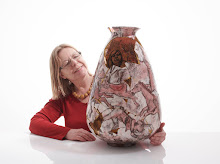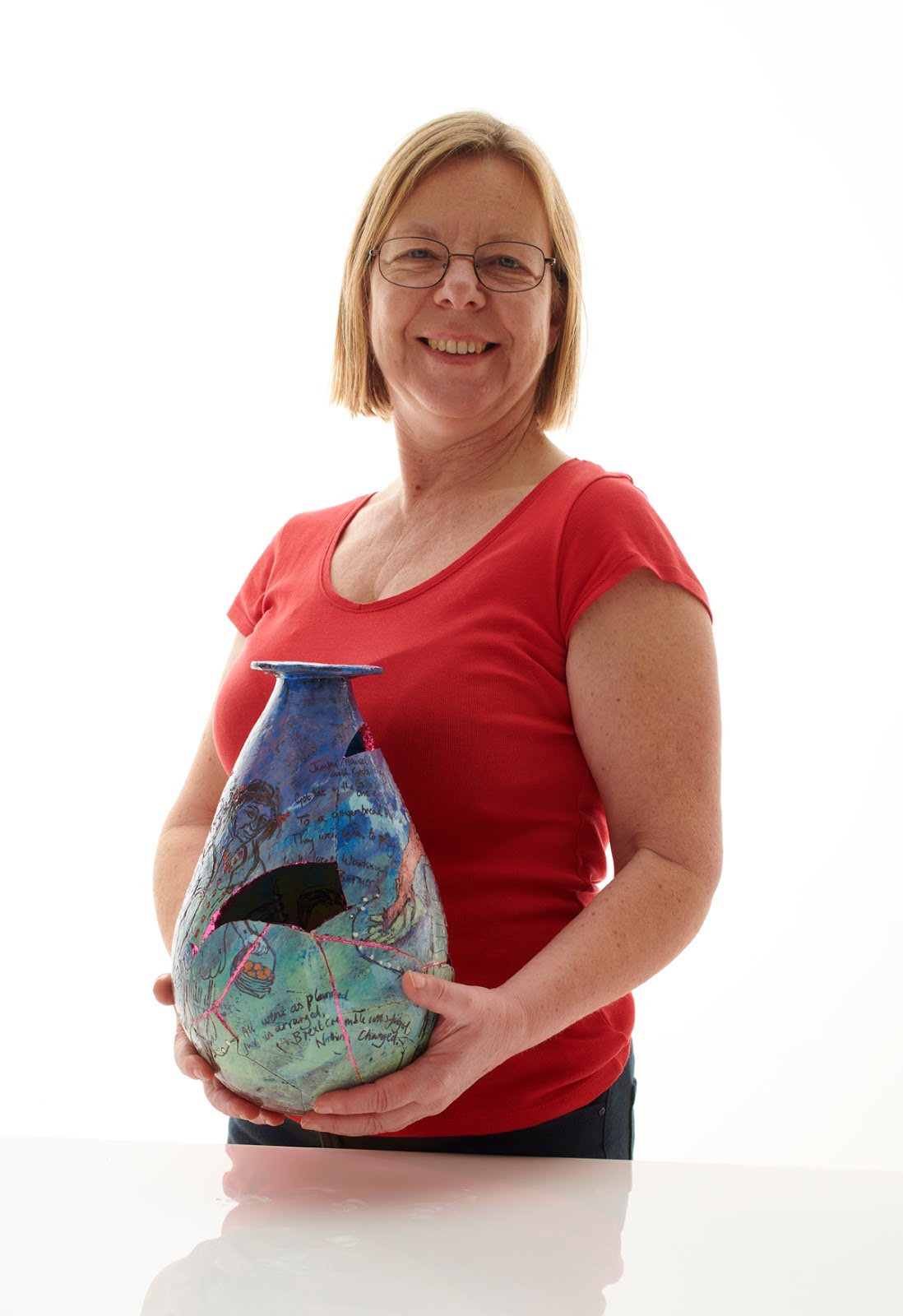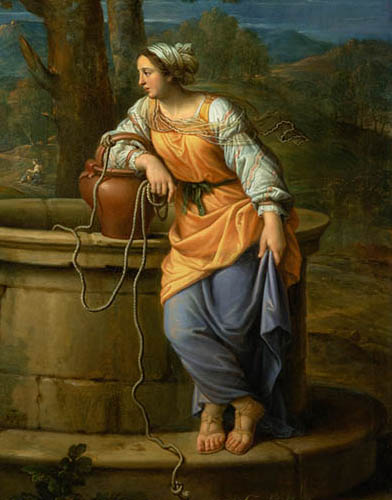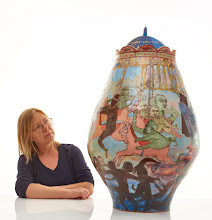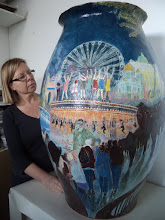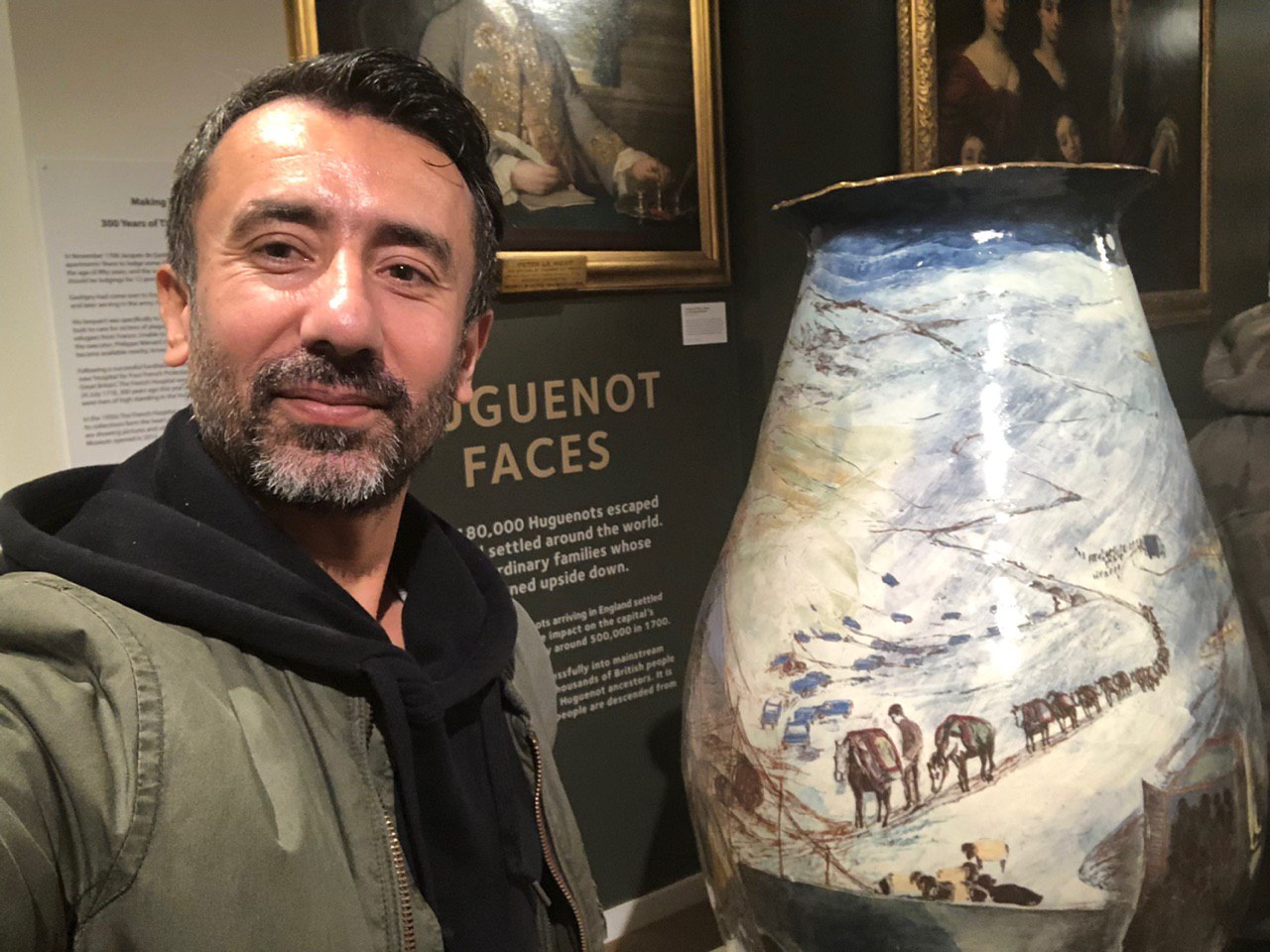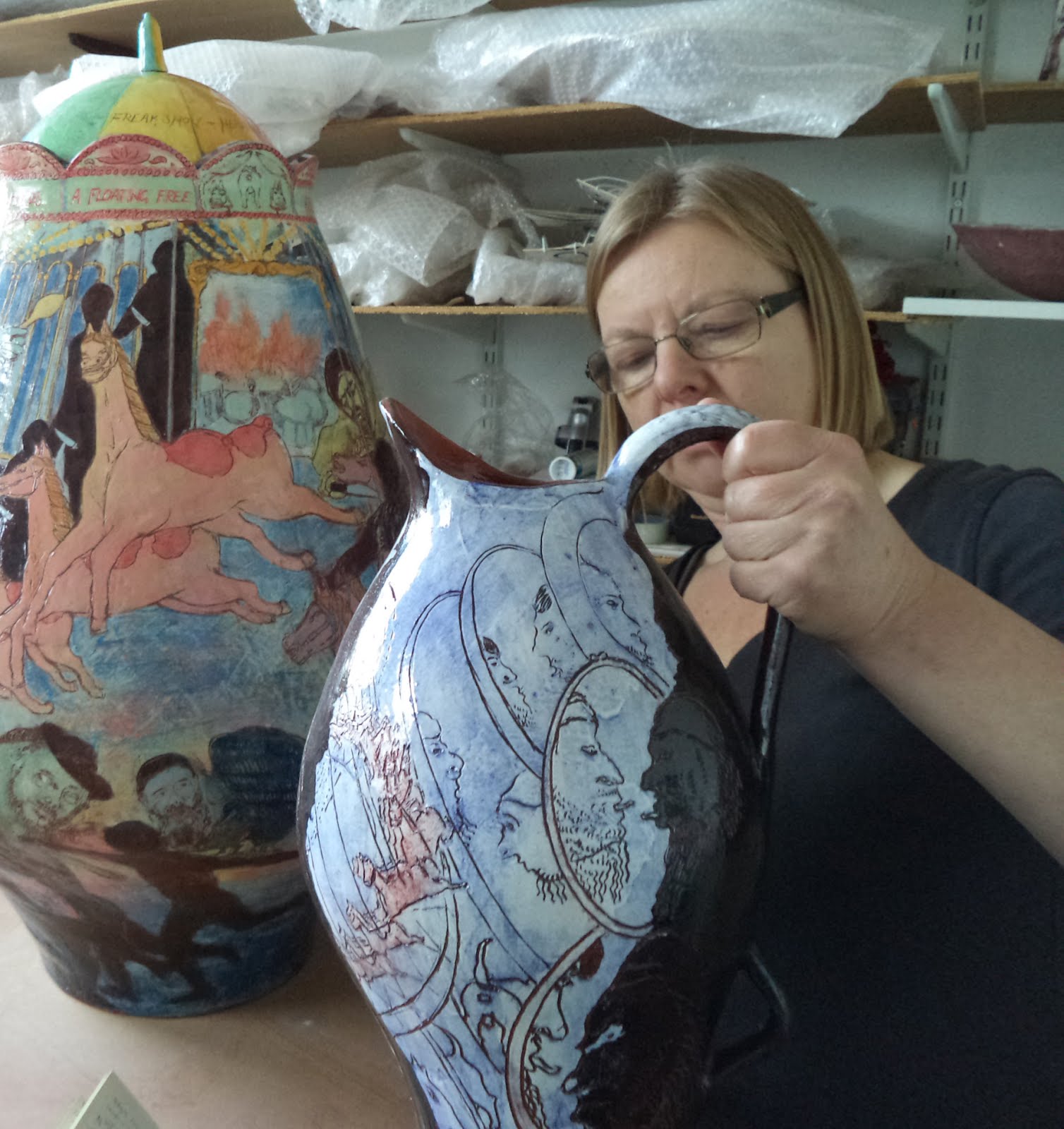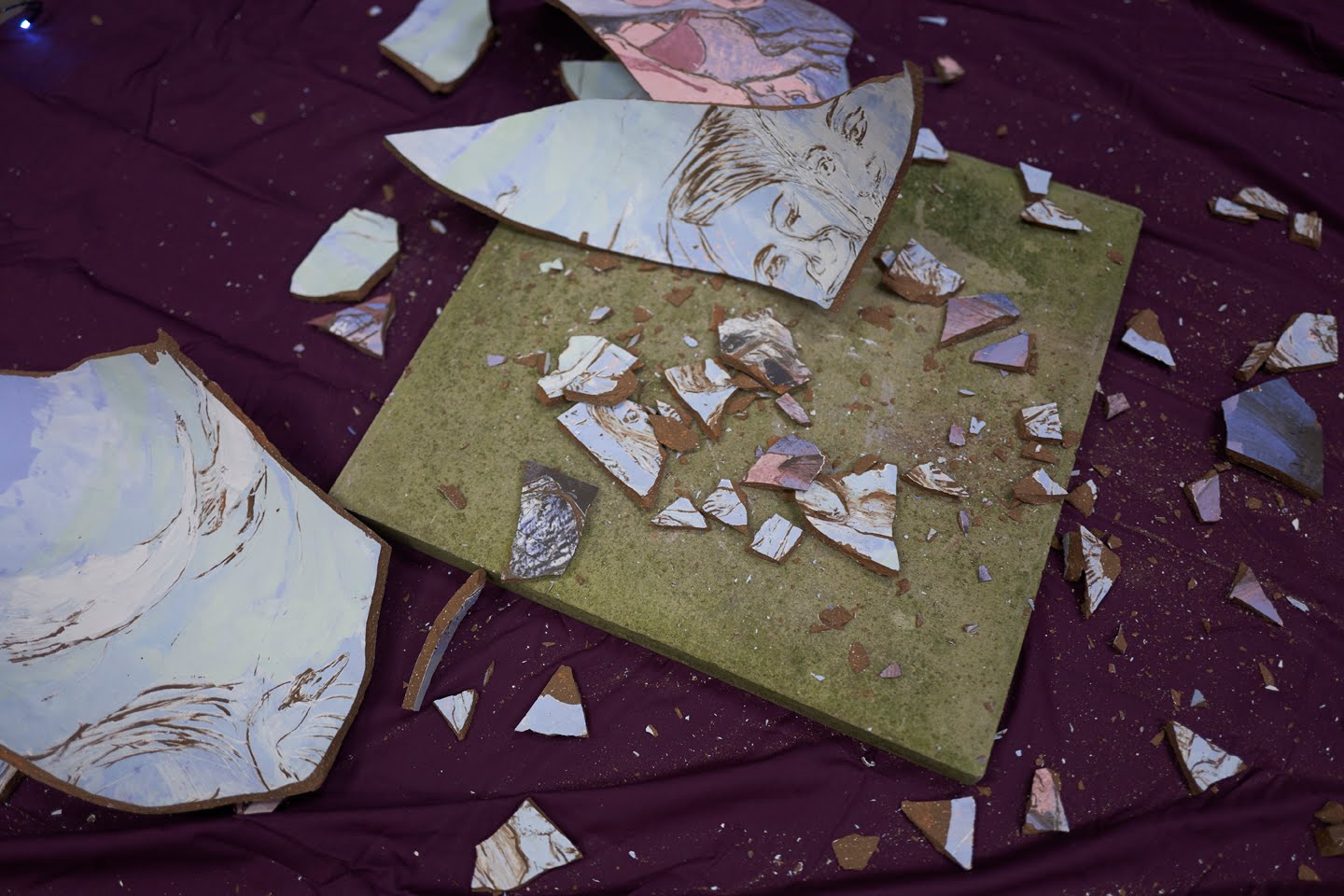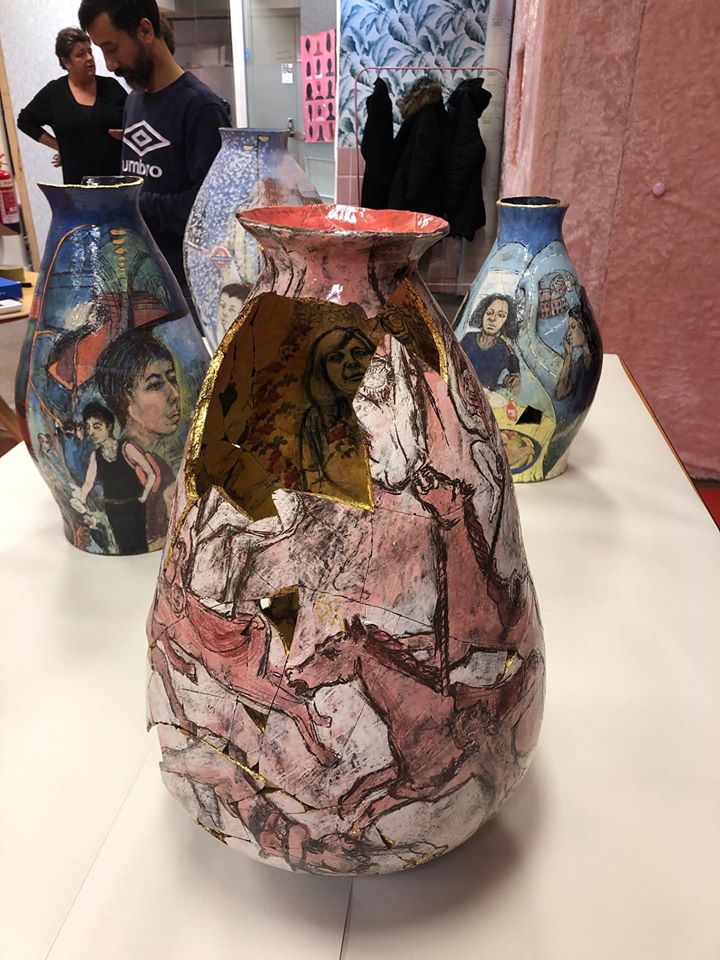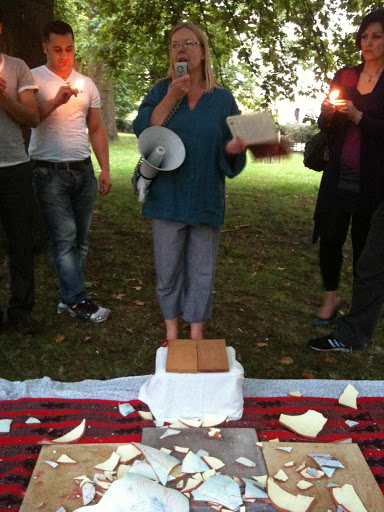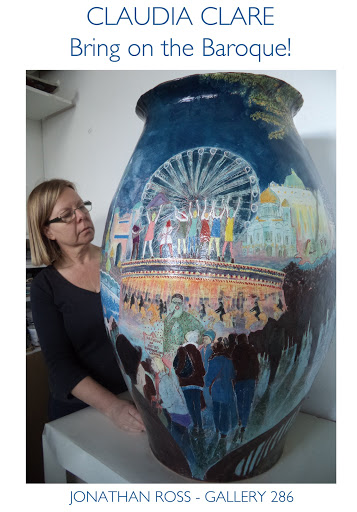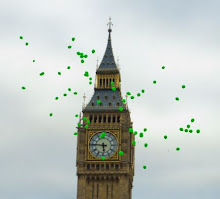Things are on the move at Ceramic Review. The much esteemed and now, 'former' editor, Emmanuel Cooper, is departing and has been replaced by Dr. Bonnie Kemske. For those of you, and you are many, who have been feeling that CR is, 'stuck stuck stuck,' relief is on the way. It will be slow. You will not detect changes immediately. The first issue in which Kemske has had any input at all is the next one, the July / August issue. She wrote the editorial but has had little, perhaps no other input.
We're in the office in Carnaby street and she's growling impatiently at the paper proofs, 'what's the point? Who still has paper proofs?' or words to that effect. Further indignation at the full-page, black and white image of a bearded Mick Casson on the back cover and some shamefully conventional photographs of Paul Scott's work on the front. 'Well, that's enough of Mick Casson for the next seven years at least,' she announces with a bold sweep a the hand, 'and these photographs!' She snorts her disapproval at Scott's blue and white subversions, barely visible in the format chosen. It's not the work that's the problem here, it's the picturing of it.
It's all music to my ears. I almost dared to feel cheerful. Perhaps I might actually enjoy working for this magazine again instead of dreading every assignment. I couldn't quite believe that here was someone, the editor of CR no less, ranting about how truly appalling the standard approach to photographing ceramics is. Goodness, it's only, what, seven years that I've been cheerfully holding forth to a brick wall on this subject. Every review I've ever written and almost every feature has included a critique of the way the work is photographed and almost every time I've explained why it really doesn't work. Not that I actually expect anyone to take the slightest bit of notice but it is deeply depressing to find ghastly, pompous, didactic demands in everything from grant application guidelines to articles in potters' newsletters to calls for contributions for books to guideline for exhibition submissions telling people exactly how their work should be pictured and, without exception, the photographer / artist must exclude, 'clutter', for which read, 'life.' I'm then expected to believe that ceramics is oh so accessible and close to human life and so tactile and embodied. And where is the human dimension? Eradicated, cleansed, sanitised, GONE. Just a pot, or something else ceramic, in a vacuum. Dead.
Over time, expect the imagery - the nature of the imagery - in CR to change. This is the moment to rethink your own photographs. Start breaking the cast iron rules. It's only when artists rebel that the establishment eventually catches up, lumbering breathlessly into line - by which time you'll be twenty steps ahead again, but never mind. And here's an interesting thing - expect the adverts to change. Kemske wants the entire look of the magazine to be different. How much of this can happen this year I dont know. I do know that the layout will stay the same for at least a year but the intention is to change that as soon as finances allow. Finances, since we're on the subject, are dire and they have to change offices which in itself will take up time, energy and scarce resources.
I would like to have asked what the five and ten year plan would be. I know it's going to include practicalities such as raising the number of subscriptions, retrieving the student and adult education market, and making sure CR appears in the academic search engines. It will also include introducing at least one longer, chewier, more analytical article per issue as soon as possible. I know that articles which chat amiably about the potter's studio, what the weather was like that morning, how many times the kiln was checked, and whether of not the maker has a cat, will be discouraged - removed in fact. The really big question that remains unanswered is: 'what about marketing and audience research?' Marketing, I learnt, has not been a part of anyone's job description since the day the magazine began. Shocking but true and wholly unsurprising. Kemske knows that has to change. but how it can change has still to be worked out. I say this is the big question because, without it, the other changes become almost irrelevant because the magazine would struggle to survive long term.
We will have a magazine more conversant with the blogosphere, the internet, with e-books and online publishing of all kinds. We will also find out who the contributors are - something which has always been lacking. In short, CR is about to become a good deal more professional. I have been worried for a couple of years now that, in a harsher economic climate, such as the one we now have, CR could not survive. I'm happy to say that I'm a good deal less worried now.
Tuesday 8 June 2010
Subscribe to:
Posts (Atom)
